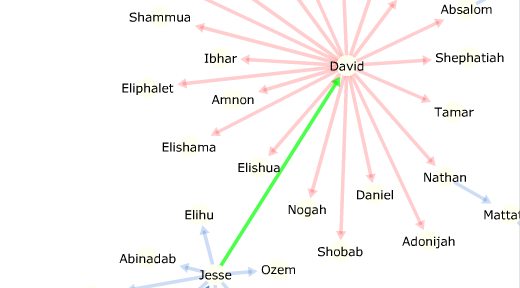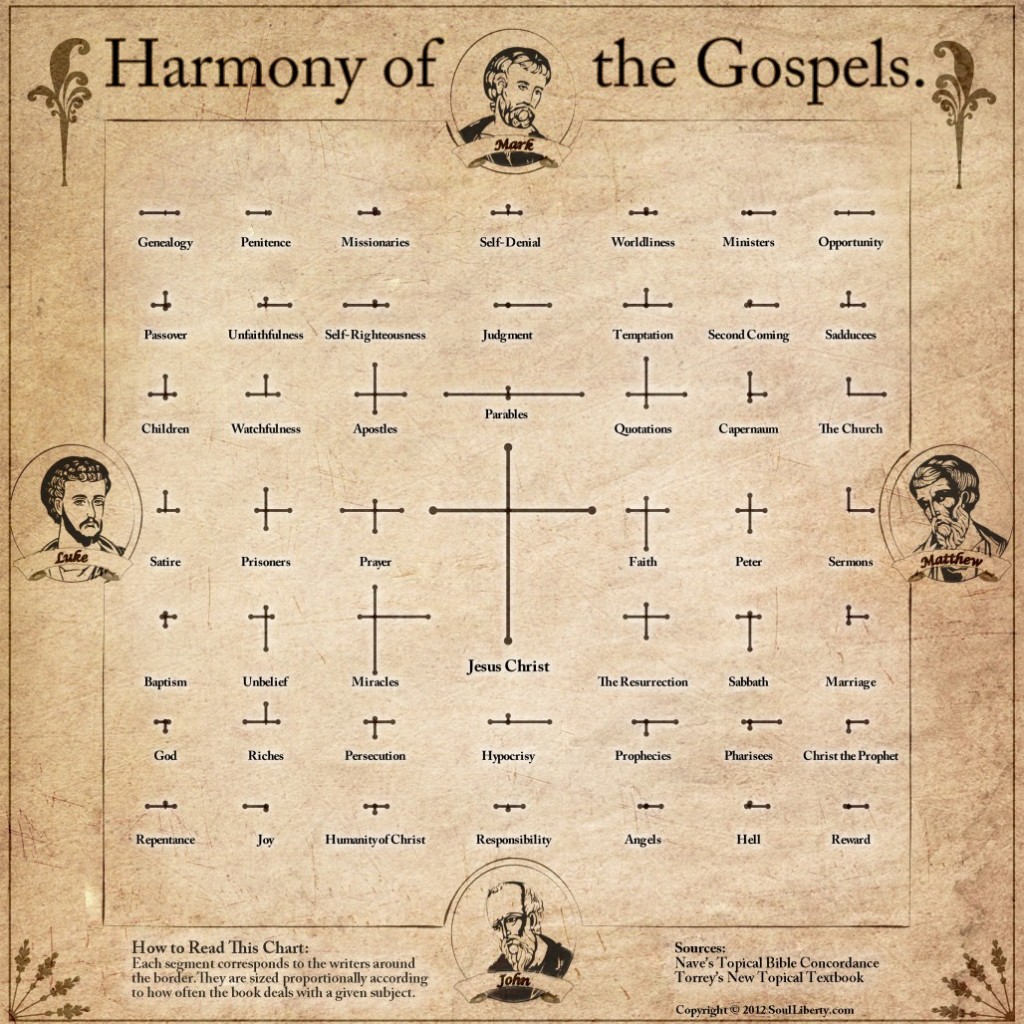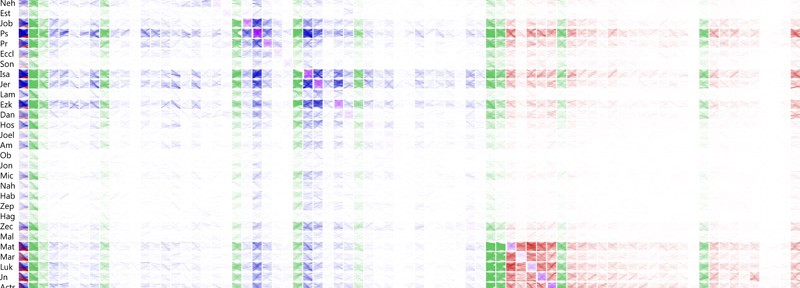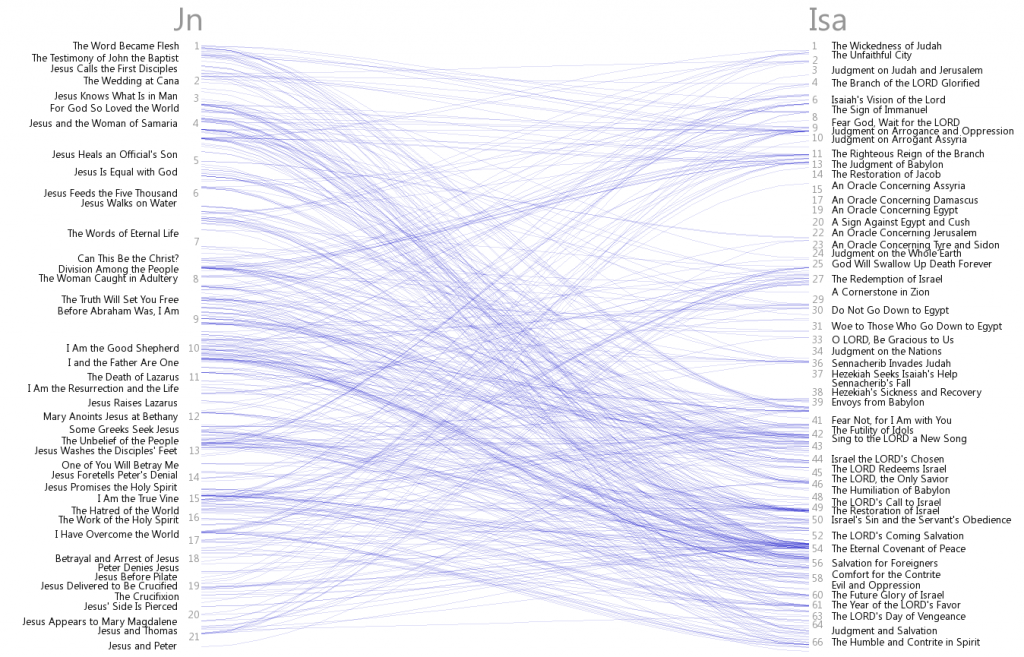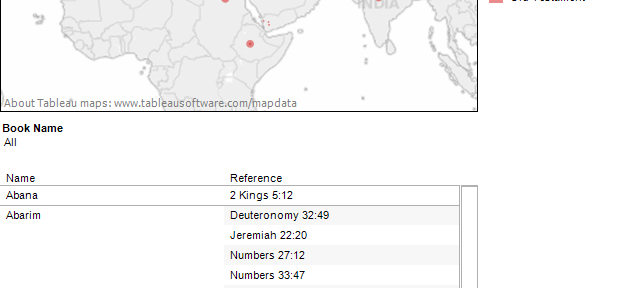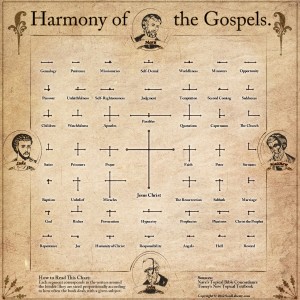 Today, the shortlist for the Information is Beautiful Awards was announced – and one of my graphics made the list! This is the first-ever open contest to find the best information visualizations around the world. I am quite honored to be among the top 25 finalists in the data visualization category with my entry “A Visual Harmony of the Gospels” (further explanation here). This and “Mapping God’s Bloodline” made the long list. I was surprised to see the less popular one advance to the next round. Winners in each category will be announced at the end of September. One special category is the Community Award which will be open for voting until September 24th (click here to vote). So, this post is to explain more of my perspective on these awards and why you should vote for my entry (and tell your friends, too!).
Today, the shortlist for the Information is Beautiful Awards was announced – and one of my graphics made the list! This is the first-ever open contest to find the best information visualizations around the world. I am quite honored to be among the top 25 finalists in the data visualization category with my entry “A Visual Harmony of the Gospels” (further explanation here). This and “Mapping God’s Bloodline” made the long list. I was surprised to see the less popular one advance to the next round. Winners in each category will be announced at the end of September. One special category is the Community Award which will be open for voting until September 24th (click here to vote). So, this post is to explain more of my perspective on these awards and why you should vote for my entry (and tell your friends, too!).
Data visualization, broadly defined, is an attempt to make complex sets of facts more understandable though the use of visual design elements. As the amount of data we create each year continues to rise, so does the popularity of its illustrations. The likely places to find such graphics are in scientific studies, journalism, political propaganda, and special interest blogs. However, it is unlikely to find much in religious pursuits. For this reason, few of the websites which curate the best visualizations have a “Religion” category (my work always ends up in the “Lifestyle” section).
I’m attempting to change that.
The Bible is more than just a story book or a manual for morality. It is a record of history that spans thousands of years, mentioning over 3,000 people and 1,200 places using 790,685 words to document the details. Scholars have catalogued 400,000 cross-references and grouped passages into 125,000 topics. How are all these things connected? Which ones are mentioned most often (or least often)? What can this tell me about God’s design of history? Data visualization offers another way to answer these questions by piecing together the massive volume of information and condensing it to visually comprehensible designs.
These awards offer an opportunity to display a different approach that uses modern techniques to portray timeless truths. It is another chance to bring Christianity to the worldwide marketplace of ideas. While I’m confident that God’s truth will ultimately prevail, I know I am an imperfect ambassador of the knowledge he has given us. That, and we live in a sinful world where truth is not clearly seen. So, I need God’s help and I need your help. Please pray for my ongoing efforts and particularly for this award. Share this post with others and ask them to take a moment to vote for “A Visual Harmony of the Gospels.”
Finally, in the interest of full disclosure, there is a monetary component to the award. The Community Award winner will get $1,000. Other award categories range from $250 to $5,000. If I do win in one or more categories, the proceeds will likely go toward furthering my efforts in this area.

